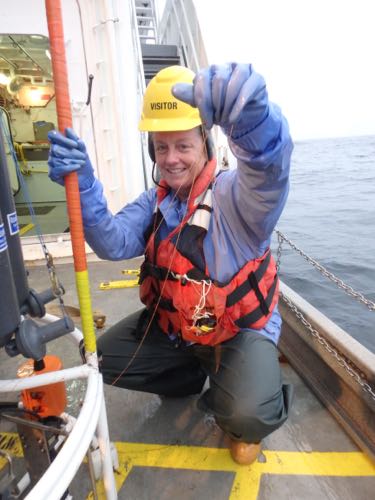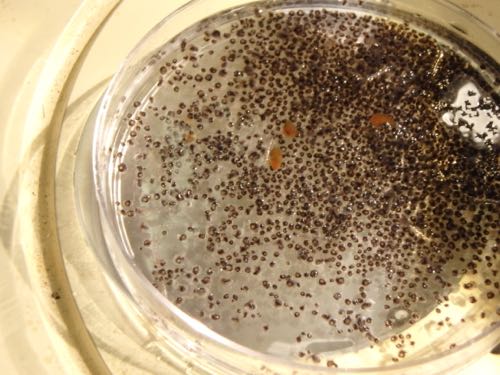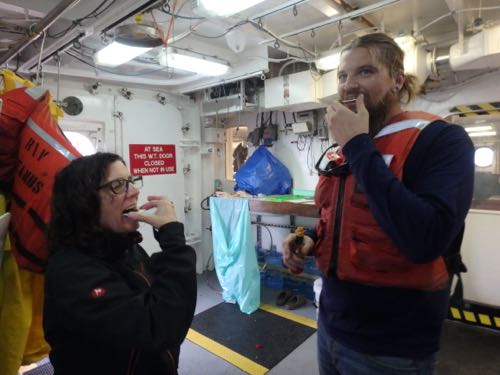 Lee disentangles jellyfish body parts from the CDT before breakfast. Photo by Mary Beth Decker.
Lee disentangles jellyfish body parts from the CDT before breakfast. Photo by Mary Beth Decker.
At each station along the transect, we get data from the CDT rosette, which is lowered into the water and gives scientists data on water pressure, salinity, temperature, dissolved oxygen, and fluorescence levels. The levels of these abiotic factors are measured via sensors on the bottom of the rosette and the computer software records these measurements as the CTD is lowered and then raised back up. The hands-on measurement at each station takes place with the plankton tows. We use three plankton nets of different sizes to document what is found in the water column. This morning at Station 5 on our current transect, we found something very interesting in the nets: pteropods! Lots and lots of them.
 In our early morning tow in the East Bering Sea, we found great abundances of pteropods.
In our early morning tow in the East Bering Sea, we found great abundances of pteropods.
We combed through all these zooplankton to find and measure jellyfish. Then we put our samples in plastic jars and preserved them with formalin. What I helped measure today in the plankton tow nets will be compared to what is found on the underwater sonar-imaging devices, ZOOVIS and ARIS. When scientists design research to investigate a problem or question, their data is stronger if it is backed up by data from other types of measurement.
 Mary Beth Decker and Benjamin Binder partake of haute cuisine: Pteropods on saltines with a dash of chili sauce.
Mary Beth Decker and Benjamin Binder partake of haute cuisine: Pteropods on saltines with a dash of chili sauce.
Math is crucial to scientific research. For example, the amount of line used for each plankton tow is based on trigonometry. If the target depth of the plankton tow is 100 meters and the desired angle of towing is 45 degrees, then it is necessary to use 141 meters of tow line. Fortunately, there's a chart with all this information on the back of a clipboard; however, it's all based on math!


Comments
Add new comment